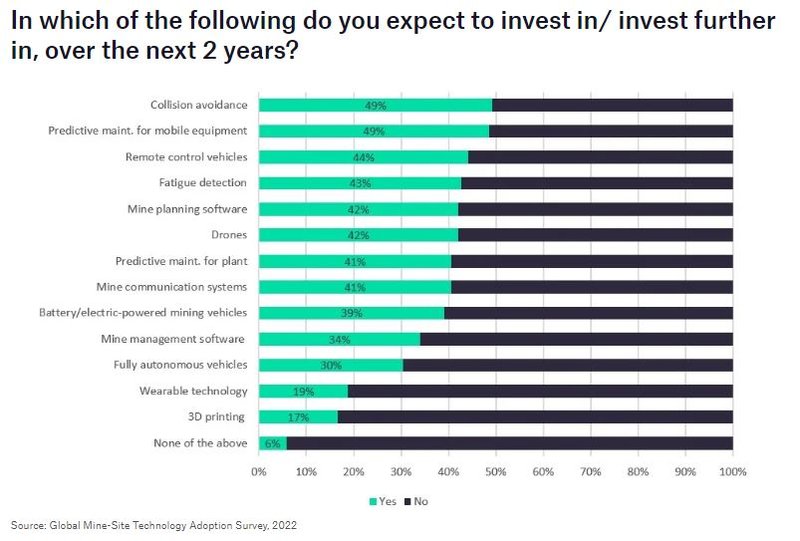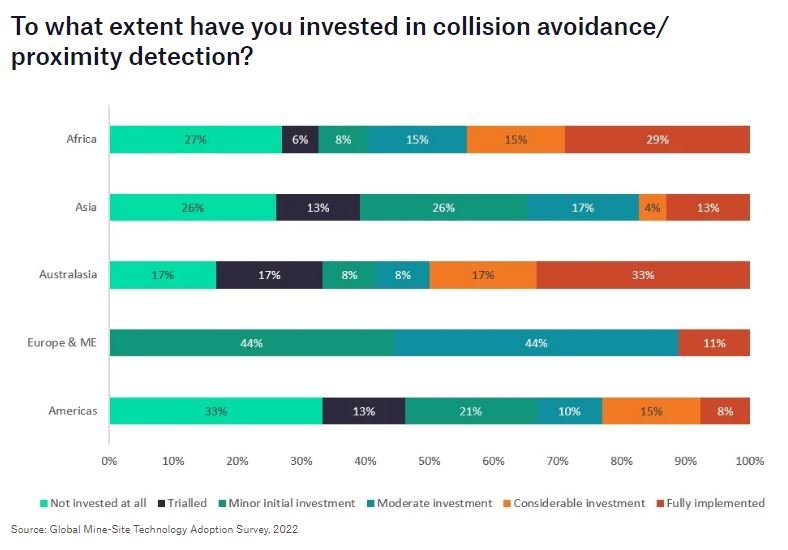Collision avoidance systems a key focus for investment in the next two years
In the previous survey in 2020, only 36% of respondents had stated they were expecting to invest in the technology in the next two years.
While the average number of fatalities across the leading miners has declined over time, with 30%-40% of industry deaths attributable to failures of vehicle interaction controls, according to the Earth Moving Equipment Safety Round Table, it is no surprise that miners are making investments in collision avoidance a priority in the coming years.
GlobalData’s latest mine-site survey, conducted between December 2021 and February 2022 and based on interviews with 138 operating mine sites, revealed that, while 47% of mines had already made at least moderate investments into collision avoidance and proximity detection, 49% of mines surveyed expected to either invest in the technology for the first time or invest further in the coming two years.
In the previous survey in 2020, only 36% of respondents had stated they were expecting to invest in the technology in the following two years.
Overall, collision avoidance ranked top of 13 different technologies examined with another safety solution, fatigue detection, being identified by 43% of mines as expecting to see investment in the coming two years in the 2022 survey, compared with 34% in 2020 and 22% in the 2018 survey.

Supporting the drive towards vehicle safety is the International Council of Metals and Minerals (ICMM), which launched the Innovation for Cleaner, Safer Vehicles initiative in 2018 and has the participation of 19 OEMs, as well as ICMM members. Amongst the ambitions is to make vehicle collision avoidance technology capable of eliminating fatalities available to mining companies by 2025.
Comparing regions, respondents from Australasia and Africa were most likely to have fully invested in collision avoidance and proximity detection, with 58% of mines in Australasia and 59% in Africa having made at least moderate investment.
Comparing expectations, 57% of mines in Africa and 46% of mines in Australasia are expected to invest in collision avoidance/proximity detection in the coming years, which is expected to further increase the lead being taken by mines in this region.

// Main image: A mining excavator. Credit: Alfredo Maiquez via Shutterstock
COMMENT